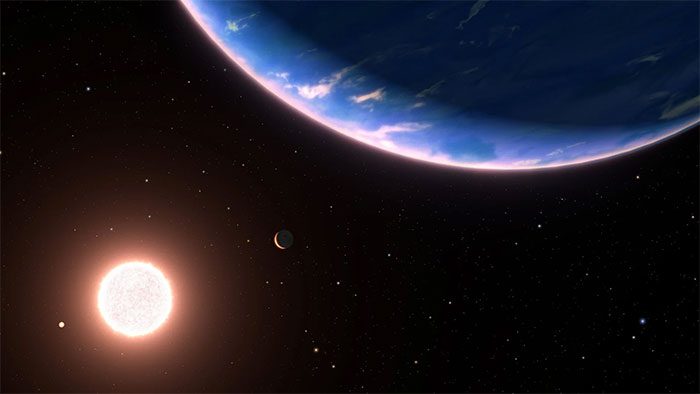The Mysterious Planet Could Be a Warmer Version of Europa, the “Moon of Life.”
The team operating the Hubble Space Telescope from NASA – ESA (the space agencies of the United States and Europe) has successfully observed the smallest exoplanet containing water vapor, named GJ 9827d.
This is a breakthrough discovery in the field of astronomy.

Planet GJ 9827d – (Photo: NASA/ESA)
Earth-sized planets with Earth-like conditions – including water and other chemical elements related to life – are the targets that planetary scientists are always searching for.
However, there is a significant obstacle: Despite over 5,000 planets, many of which qualify as “Earth-like,” discovered by NASA’s TESS planet-hunting mission, they are all very far away.
It is extremely challenging to “look” into their atmospheres to determine the chemical composition of Earth-sized exoplanets or those just slightly larger than Earth.
GJ 9827d orbits a red dwarf star located 97 light-years away in the constellation Pisces, with a diameter only twice that of Earth, a small size in the planetary realm.
However, by synthesizing observation results from 11 instances when this planet “transited” its parent star, Hubble has helped scientists unveil its atmosphere through spectroscopy.
A precious finding emerged: Water vapor, one of the leading indicators representing the potential for life.
Scientists suggest there are two ways this water vapor could be produced, meaning this planet could belong to one of two categories.
- One is, it belongs to the “mini-Neptune” group, a type of gas planet smaller than Neptune and extremely common in the universe.
- Two is, GJ 9827d is a warmer version of Jupiter’s moon Europa, where NASA believes there is an underground ocean harboring life beneath its icy crust.
The estimated amount of water on this planet is about double that of Earth.
However, there is some disappointing news: Its temperature is comparable to that of Venus, making the possibility of habitability still unlikely.
Despite this, the method for determining atmospheric composition through spectroscopy in such a small and distant world has opened a new chapter in the history of space exploration.
According to the Hubble team, this method could be applied to a more powerful telescope, the James Webb.
At 30 years younger than Hubble and with sharper, further-reaching vision, James Webb is expected to unveil the atmospheres of even smaller planets, including those the size of Earth that have shown signs friendly to life.


















































